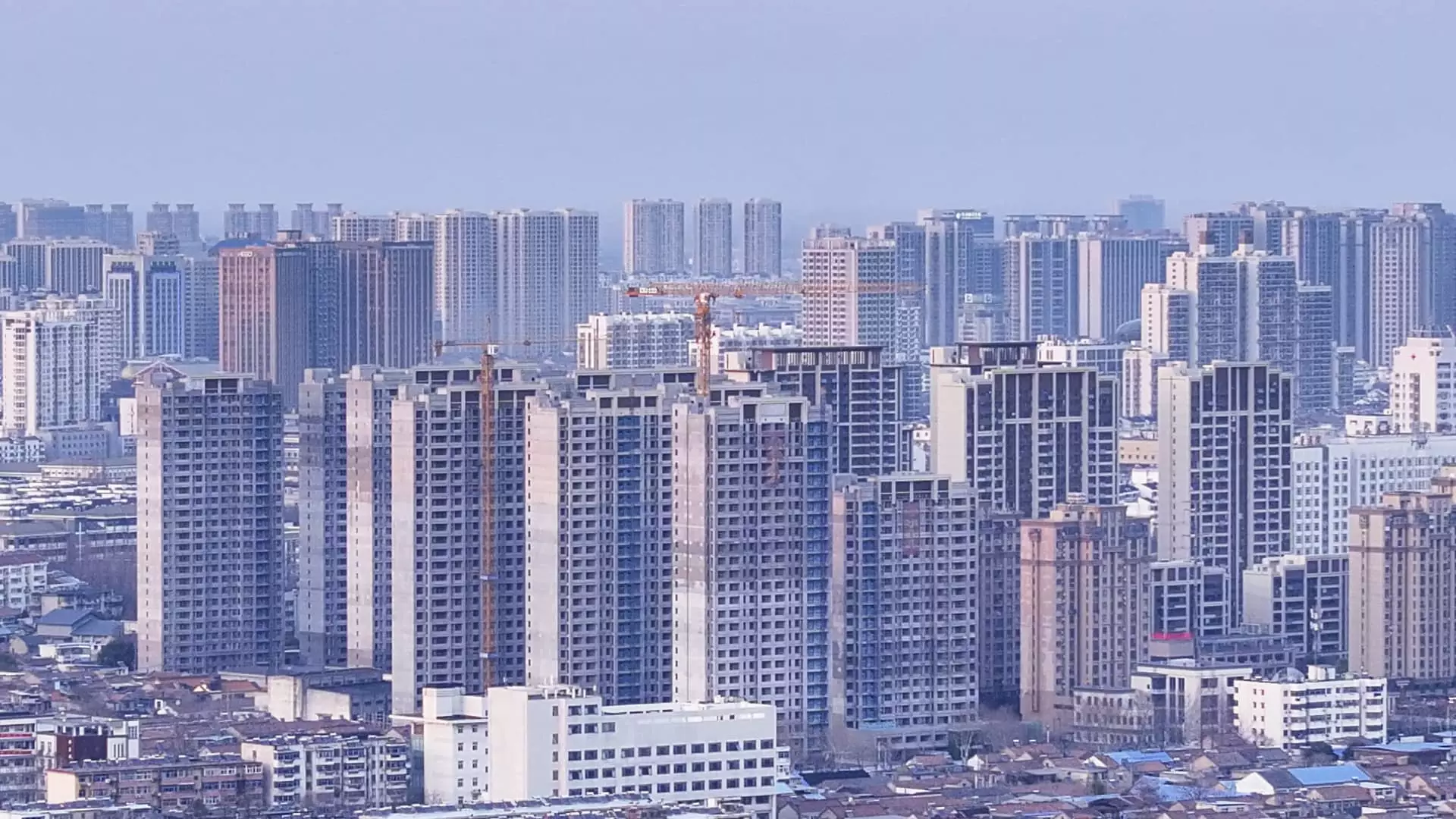The Chinese real estate market has experienced a steep decline over the past few years, resulting in a climate filled with uncertainty and trepidation. With the sector originally accounting for over a quarter of the nation’s GDP, the ramifications of this downturn have ripple effects on household wealth and investor confidence. Beijing’s crackdown on developers’ debt reliance since 2020 has rattled the foundations of the market, leading to soaring bankruptcies among major players like Evergrande. Previous efforts at recovery seem to have fallen short, leaving analysts and homeowners alike questioning when — or if — a recovery can take place. Yet emerging signs, driven by recent analysis, suggest that perhaps the market is on the verge of stabilization.
Analysts Are Calling It: A Turning Point?
UBS analysts have emerged as the latest forecasters predicting that surprising, if tentative, recovery indicators may be surfacing. John Lam, the head of their Asia-Pacific property research unit, emphasized that signs of stabilization are clearer than they have been in several years. While he cautioned that such indicators are still localized, the uptick in secondary home sales — which have surged over 30% in key cities — serves as a glimmer of hope against a predominant backdrop of doom.
This is a stark contrast to a bleak environment where property sales had nearly halved since 2021. The contrast brings about an important conversation: can we realistically expect a turnaround in a sector that has caused so much economic havoc? While optimism is warranted, it must be tempered by an understanding of the challenges that remain, particularly with respect to the affordability crisis impacting many would-be buyers.
The Challenge of Localized Recovery
It’s essential to understand that the commendable trends noted in major urban centers, such as rising sales and increasing prices, are not universal across the country. Smaller cities continue to languish with oversupplies and stagnation. The improvements we are witnessing in China’s largest cities may paint a misleading picture of the overall market health. A localized recovery, especially in the populous large cities, can lead to inequality where wealth begins to consolidate even further. Policymaking must therefore go beyond urban intervention — it should seek to enforce regulations that promote equitable development in less fortunate regions too.
The UBS prediction that home prices could stabilize by early 2026 is indeed a hopeful outlook but should not lull policymakers into complacency. Plans and initiatives need to focus on generating robust financial ceilings, minimizing the risks of speculative bubbles reinflating as the market stabilizes.
Investment Dynamics: A Dual-Edged Sword
Increased investment interest from foreign capital has stirred the pot, highlighting the dual nature of its effect. While it can inject lifeblood into the beleaguered market — as seen through joint ventures like Invesco’s collaboration with Ziroom — it can also skew market dynamics terrifically. If foreign investors prioritize high-end developments over affordable housing projects, the gulf between the rich and the working class could further widen, exacerbating an already pressing social issue.
As the rental market begins to reshape itself with new developments like the proposed 1,500-room facility near Beijing’s Winter Olympics site, one must question the sustainability of such projects. Will they deliver value to broader communities, or will they simply cater to a niche? Government leaders must ensure that foreign investments align with national housing goals to prevent creating new bubbles that could mimic previous paths of dysfunction.
The Role of Consumer Confidence
For any true market recovery to materialize, consumer sentiment will play a pivotal role. The policy measures undertaken by the state can only push so far; long-term recovery hinges on a profound resurgence of consumer confidence. Previous quantitative and qualitative steps aimed at stabilizing the market must translate to a palpable shift in public trust — this is not something that can happen overnight.
As noted by Sky Kwah from Raffles Family Office, execution is critical. If the local populace does not believe in the efficacy of these policies, no amount of governmental restructuring can facilitate productive outcomes. Only through rebuilding trust can we hope to see a sustained market rebound.
Ultimately, as we observe these dynamic trends in China’s property landscape, the need for cautious optimism mounts. The positive signals uncovered by analysts must act as both a guide and a reminder of the significant work that still lies ahead to solidify a marketplace that serves the many, not just the fortunate few.

